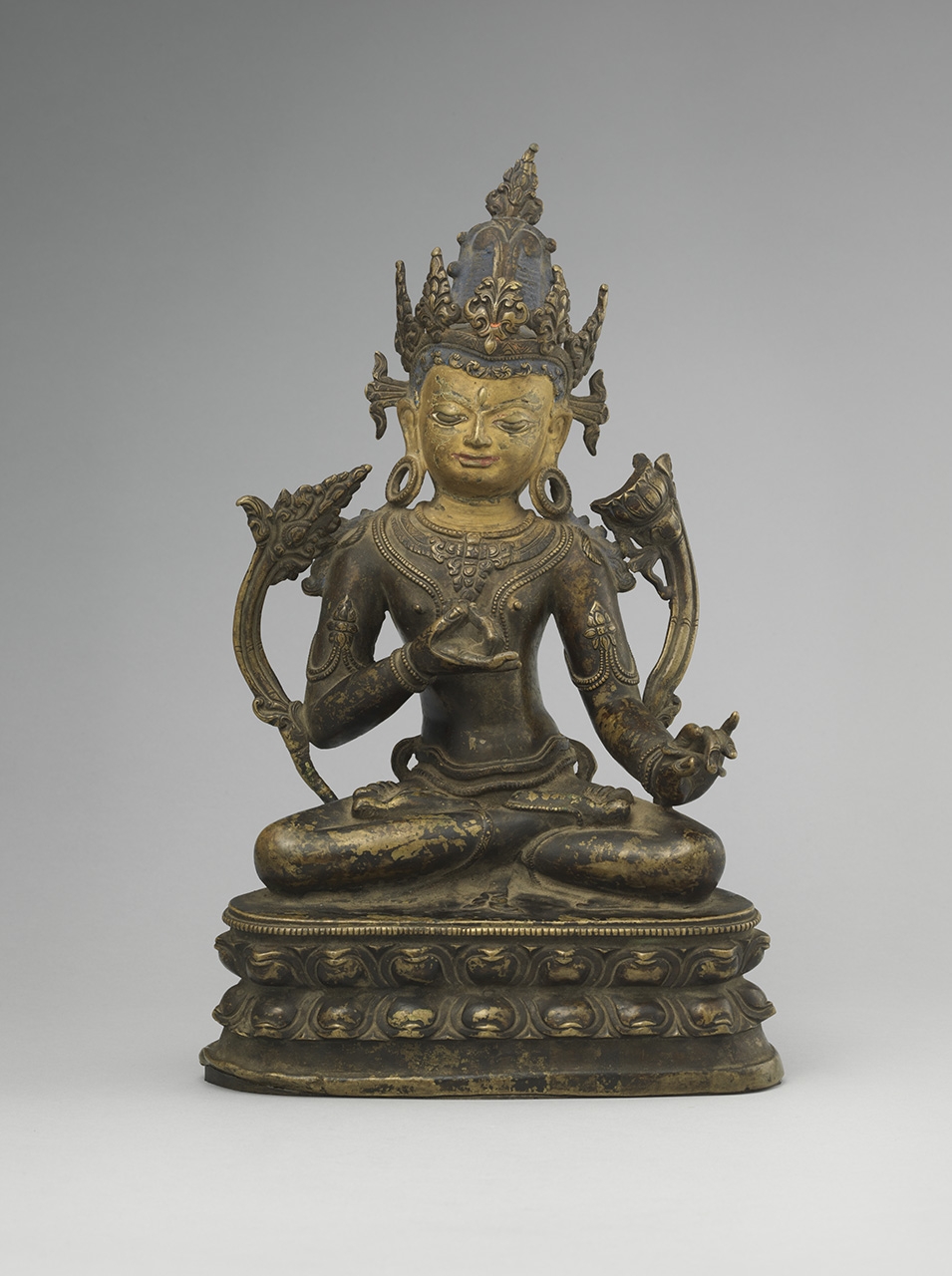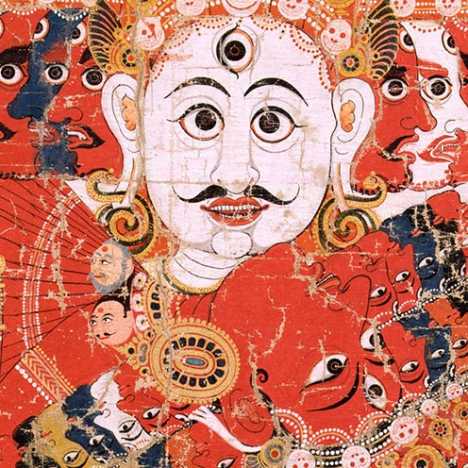
At first glance this sculpture appears to represent the bodhisattva Avalokiteshvara, who has a lotus as his symbol. However, closer inspection reveals that the figure once held a vajra upright between two fingers of his right hand. A break on the lotus further indicates that there was once a bell attached to it. These subtle details reveal that this is in fact Vajrasattva, who is considered a primordial buddha, a meditation deity, and the primary bodhisattva of the vajra family.
In works of early central-Tibetan art such as this, figures have massive heads and disproportionally large hands and feet. Metal sculptures are made of a rather dark copper alloy, and the figures are depicted in elegant poses with a minimal sense of movement. The deities have high hair knots at the back of their heads, crowns with large points set apart from each other, ribbons and circular earrings, and strands of hair falling on their shoulders. They sit on double-lotus thrones with plain, fleshy petals. The large jewelry they wear is graceful but has little variation.
H 14 x W 8 1/2 x D 5 1/4 in.
C2009.13
- https://dev.rubinmuseum.org/images/content/786/c2009.13-p__zoom.jpg
- https://dev.rubinmuseum.org/images/content/786/c2009.13-p__zoom.jpg


